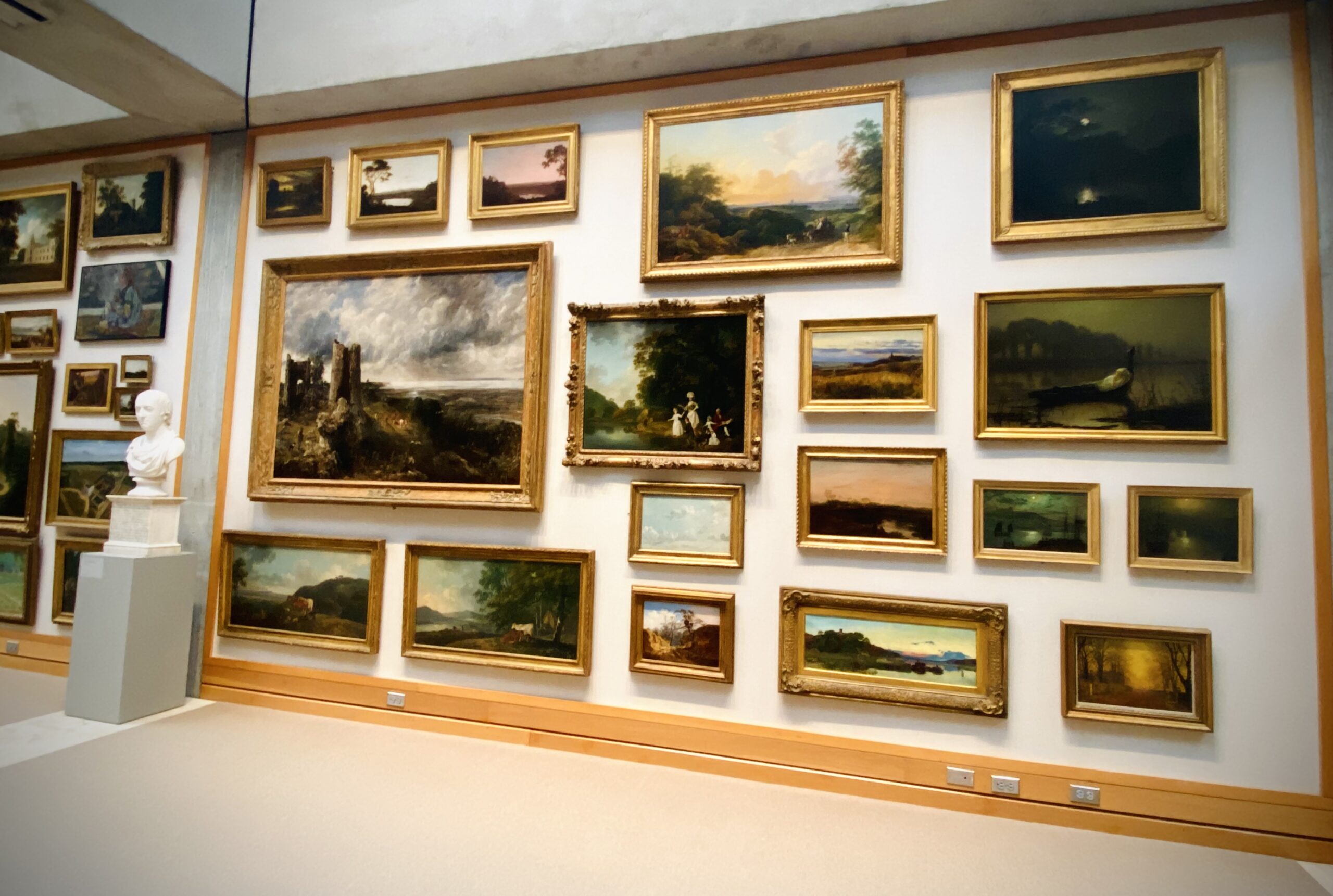
Content warning: This article contains references to suicide.
The National Suicide Prevention Lifeline is a hotline for individuals in crisis or for those looking to help someone else. To speak with a certified listener, call 1-800-273-8255.
Crisis Text Line is a texting service for emotional crisis support. To speak with a trained listener, text HELLO to 741741.
On-call counselors from Yale Mental Health and Counseling are available at any time: call (203) 432-0290. Additional resources are available in a guide compiled by the Yale College Council here.
The art gallery is the first place I go when I hear the news. I close my eyes and whisper a prayer — “please save us from the pain.”
It was cold that day. I felt the chill down my spine as I read the news and the chill of the wind down my back. I remember swinging my leg over my bike, pedaling down York Street, feeling the weight of the news settle inside me. I have heard news like this before, but, this time, I didn’t just hear it — I felt it. It wasn’t like being told the weather or any other piece of information to absorb and move past. This time, it pressed into my chest, made its way up my throat and sat there. The weight of the news spilled out in slow, quiet tears. I tried breathing — but now, breathing was not only a measure of calming but a measure of life.
I push through the heavy glass doors of the art gallery. I live next to it in Jonathan Edwards College, so it feels like an extension of home. The routine is familiar — I walk to the lockers, hang up my coat, slip my bag inside.
I come to the art gallery in search of beauty. I believe art is beautiful — or at least, I want to believe that. But what we call art today feels boundless, its definition stretched thin. Some art is beautiful to me. But not all.
I have wandered these halls often — sometimes alone, amongst the chorus of my own thoughts, sometimes with friends I’ve persuaded to join me, debating what is beautiful. But now, I am not just asking what is beautiful — I am asking what beauty is. A word heavy with thought and wonder, one that many before me have tried to define. “Beauty will save the world,” Dostoevsky proclaimed. But what does beauty save us from? And how?
Perhaps I want beauty to save us from pain. But what makes someone stop seeing beauty, stop living? Maybe beauty keeps us here. We create beautiful things to hold onto life. But pain is not always beautiful, and beauty does not always come from pain. Sometimes pain is just pain. Sometimes it is so vast that beauty disappears, and with it, the will to go on. I have felt that. Maybe Lucas did too.
As I think about how Lucas must have felt, I remember Leo Tolstoy’s words: “If you feel pain, you are alive. If you feel other people’s pain, you are a human being.” But what happens when pain becomes too much? When feeling it no longer proves life but instead takes it away?
I wonder about the balance between life and death, the threshold where pain shifts from something endured to something unbearable. I feel the movements of pain within me. I think of the pain that lived inside Lucas, growing until it took on a life of its own — by taking his. In Tolstoy’s terms, Lucas’s pain was proof of life. But to me, it was also proof of the loss of life.
Pain resists definition, a bit like beauty. Pain can create — art, music, poetry — but it can just as easily destroy. I once wanted to believe in the beauty of pain. I was drawn to the myth of the tortured artist, the idea that suffering gives birth to something greater. Picasso’s work is revered, his paintings framed in museums, studied and admired. Yet he never saw their impact. His pain created, but it also consumed.
I wonder when Lucas stopped seeing beauty. If he stopped seeing beauty. I think about the times I have lost sight of it myself.
I walk through the main hall past marble columns, evening light filtering through the tall-paned glass. Usually, I move quickly, making quiet judgments — “I like that one.” “That one is just okay.” “How is that even art?” But today, I linger at each sculpture.
I pray silently, “God, save us. Save humanity. Save the world.” The words loop in my mind, until they are no longer words but a quiet hum. I keep thinking of Dostoevsky: “Beauty will save the world.” I don’t know if I believe that. But I want to.
I search for beauty, as if it might save the world. As if it might save me. I think of Lucas, who could not be saved. I seek out beautiful things when I am sad because I need to believe beauty still exists in a world of pain. Perhaps beauty makes life bearable. That is why I came to the art gallery.
When I received unbearable news, I needed to feel like I could still exist in this world. So I came here, to stand among paintings of sunsets and clouds, of people frozen in time — women in ball gowns, children whispering secrets, ballerinas mid-spin. I came to be surrounded by beauty.
The question is not whether beauty exists — it does. The question is whether we can still recognize it.
So I step closer. I walk up to the paintings, inspecting the globs of paint, the texture, the raised points where the brush left its mark. I think about the construction, how each stroke was placed, how it all came together. I like the Impressionist section because I can walk up close, see the chaos of color and then step back and watch it resolve into something whole. I can see the steps of creation. For me, beauty is creation. Creation is what we leave behind.
Creation is also a way of holding on, a way of making sense of what feels unbearable. As Tolstoy wrote, feeling another’s pain is what makes us human. I think of Lucas and the weight of his pain. When I heard the news, I closed my eyes and whispered my prayer again, “please save us all from the pain.” I wanted to forget the words I read, to replace them with oil paintings, glass vases, silver platters. I wanted to lose myself in beauty, to erase what had already happened.
But forgetting does not change what still exists — or what no longer does. Forgetting Lucas would be a second death. Forgetting is the erasure of a life, while remembering is its preservation. He no longer exists in flesh but in memory and meaning.
I think of all the people I have lost to suicide. Every year since my sixth grade, another name, another email, another life cut short. At first, it felt distant. Tragic but abstract. I knew it was sad, but I didn’t know how to feel it. I read the words, processed them and moved on. I sympathized, but I did not understand. Not until now. Not until now did I know what it was like to carry pain so heavy that life itself felt impossible. Not until now did I empathize.
I felt for Lucas because I knew that feeling of being in so much pain that I did not want to live. That I did not know how to live. That was my truth for a long time. I pray that no one else feels what I have felt, what Lucas may have felt, what each person I have lost over the years has felt. I pray there is a way to live beyond pain. And I believe there is.
That search begins here in the art gallery.
I declare to myself, “I am searching for beauty,” laughing a little at the boldness of it, at the way it sounds silly out loud. Still, I move from one painting to the next, studying them. I think about how old they are — how they were made centuries ago, how they have outlived their makers. How, even after all this time, they remain. I wish the same for those I have lost. That their memories might last as these paintings have.
Not all the art here is beautiful to me. But all of it has survived. It has withstood criticism, weathering, time. It has endured.
Endurance is its own kind of beauty. Even if beauty does not save the world, may it help us bear all that is not beautiful. If beautiful things can still exist — can still endure — so can I.







